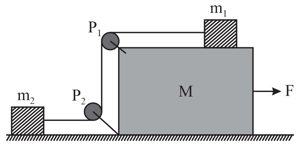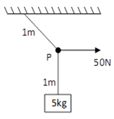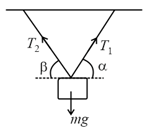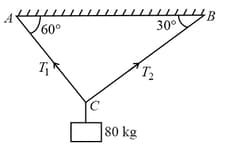Two forces are acting in a mutually perpendicular direction at a point. If the magnitude of both forces is equal i.e. . Find the resultant force acting at that point.
Important Questions on Statics
A flexible chain of weight W hangs between two fixed points and which are at the same horizontal level. The inclination of the chain with the horizontal at both the point supports is . What is the tension in the chain at the midpoint?
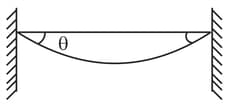
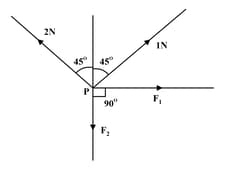

In figure given below, masses , and are , and respectively. The coefficient of friction between and ground is zero. The coefficient of friction between and and that between and ground is . The pulleys and the strings are massless. The string is perfectly horizontal between and and also between and . The string is perfectly vertical between and . An external horizontal force is applied to the mass . (Take ).
Let the magnitude of the force of friction between and be and that between and ground be . For a particular force it is found that . Find and . Write equations of motion of all the masses. Find , the tension in the string and accelerations of the masses.
